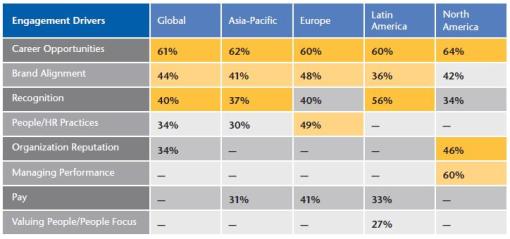Organizations are a lot like a herd of horses. As you hire employees at all levels, the jockeying for position begins – and much like horses, the strongest, most dominate one usually wins. However, unlike horses, that doesn’t mean the rest of the herd respects the leader – they may only fear them. And while fear will get results through sheer compliance, there is no employee engagement, no going the extra mile – there is only biding of time until the herd can exploit an opportunity to take down the leader.
Horses are herd animals – they thrive in the presence of a strong, wise leader and the security of their numbers. Organizations are much like a herd of horses – they only thrive under the watchful eye of strong and wise leaders. Notice my terminology – thrive! Organizations, like horses can subsist, but their desire is to be vibrant and thrive.
So how do you lead an organization to thrive? Well, it starts with meeting the needs of your employees. All employees have 6 basic needs. The need for:
- Stability and certainty – all employees want to enjoy the comfort of certainty – knowing that if they do a good job there will be other opportunities.
- Challenge – all employees want to be stimulated by the challenge of their work – they don’t want to be bored.
- Recognition – employees want to know their efforts and accomplishments are appreciated.
- Belonging – employees want to feel they are part of something bigger than themselves and they want to take pride in that belonging.
- Development – employees want to grow and advance, gain new knowledge, skills and abilities.
- Contribution – employees want to feel their work has meaning and purpose.
When employee needs are met, employees feel important and this translates into engagement. Employee engagement is defined as: The emotional commitment an employee has to the organization and its goals, resulting in the use of discretionary effort.
The concept is quite simple, when employees are engaged they are more likely to work together to achieve the goals and objectives of the organization.
The following table excerpted from a 2010 Aon Hewitt study on employee engagement and performance outlines the engagement drivers found to motivate employees.
The orange shaded cells show the top three scores for each region. In addition to career opportunities, rounding out the top five global engagement drivers for 2010 are brand alignment, recognition, people/HR practices, and organization reputation. Now compare those findings to the 6 needs of all employees – the fit is undeniable.
Research demonstrates a strong link between employee engagement and performance. Companies where 60 to 70 percent of employees were engaged, produced an average total shareholder’s return (TSR) of 24.2 percent; compared with companies where employee engagement was between 49 to 59, TSR fell to 9.1 percent; and companies with engagement below 25 percent suffered negative TSR. (Source: Employee engagement at double-digit growth companies, Hewitt Research Brief).
Bottom line – if your organization is looking for a sustainable competitive advantage, look no further than meeting employee needs to drive employee engagement. Otherwise, you could continue to manage by fear and hope for the best.
*Horse-ism – Using good ‘ole horse sense to become an extraordinary leader!



